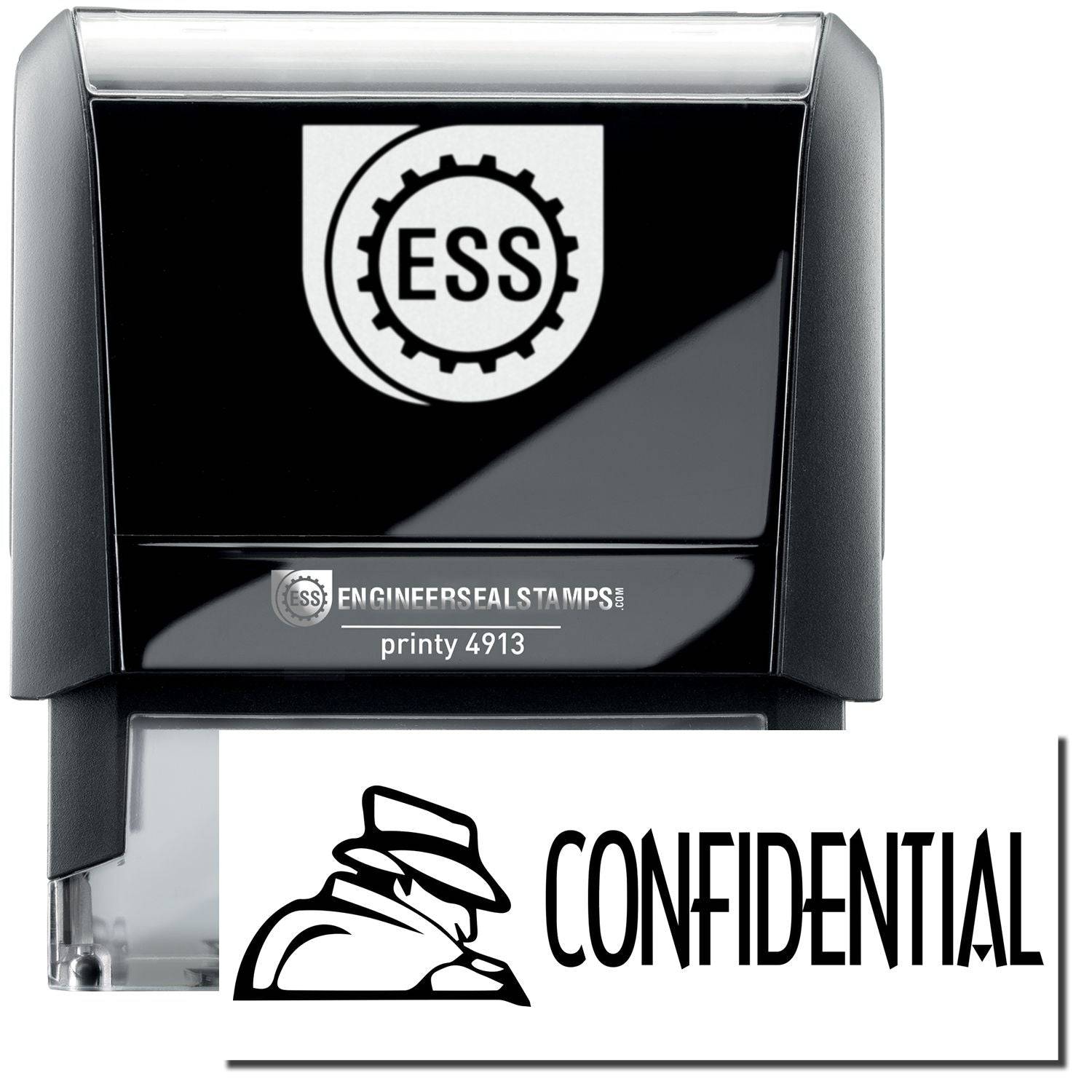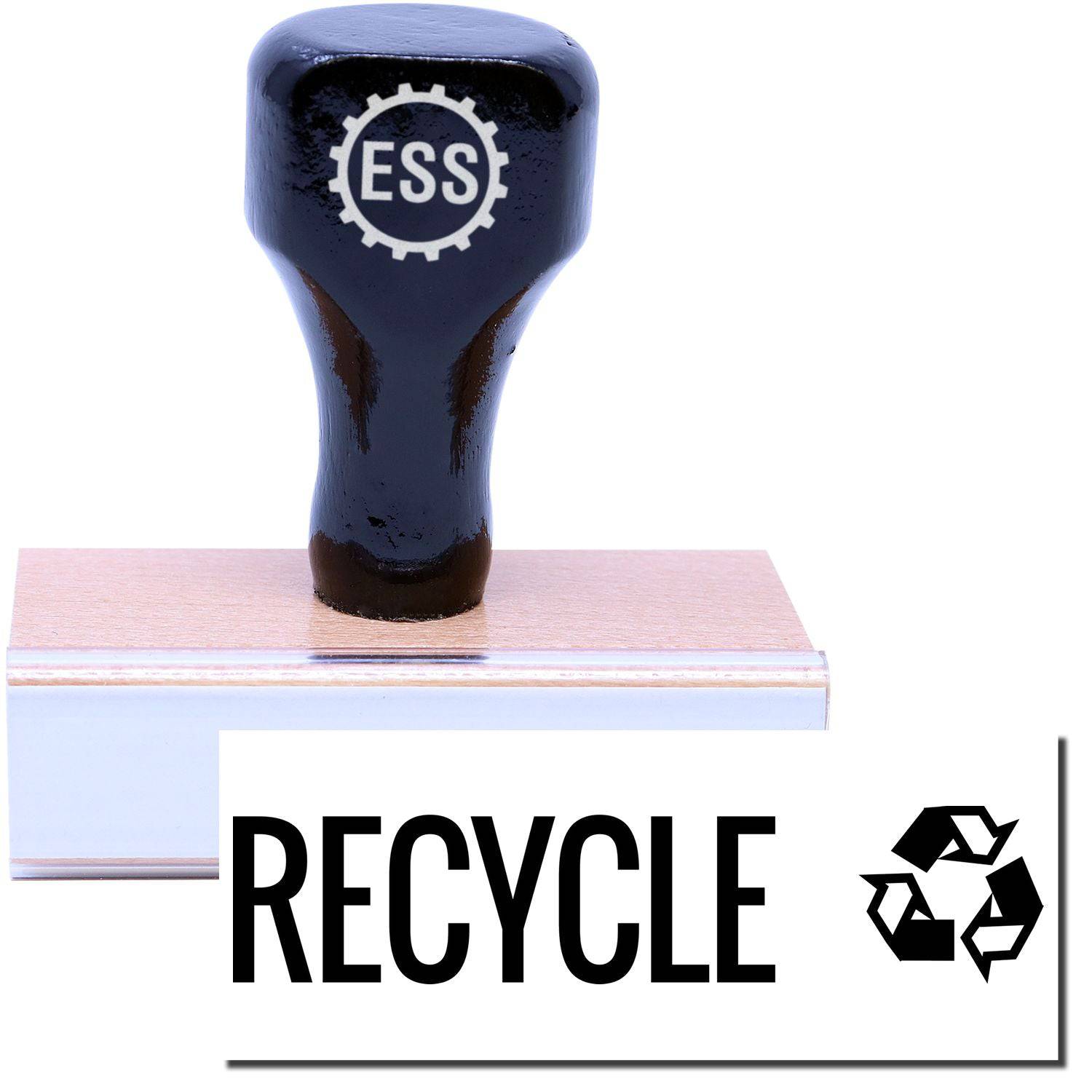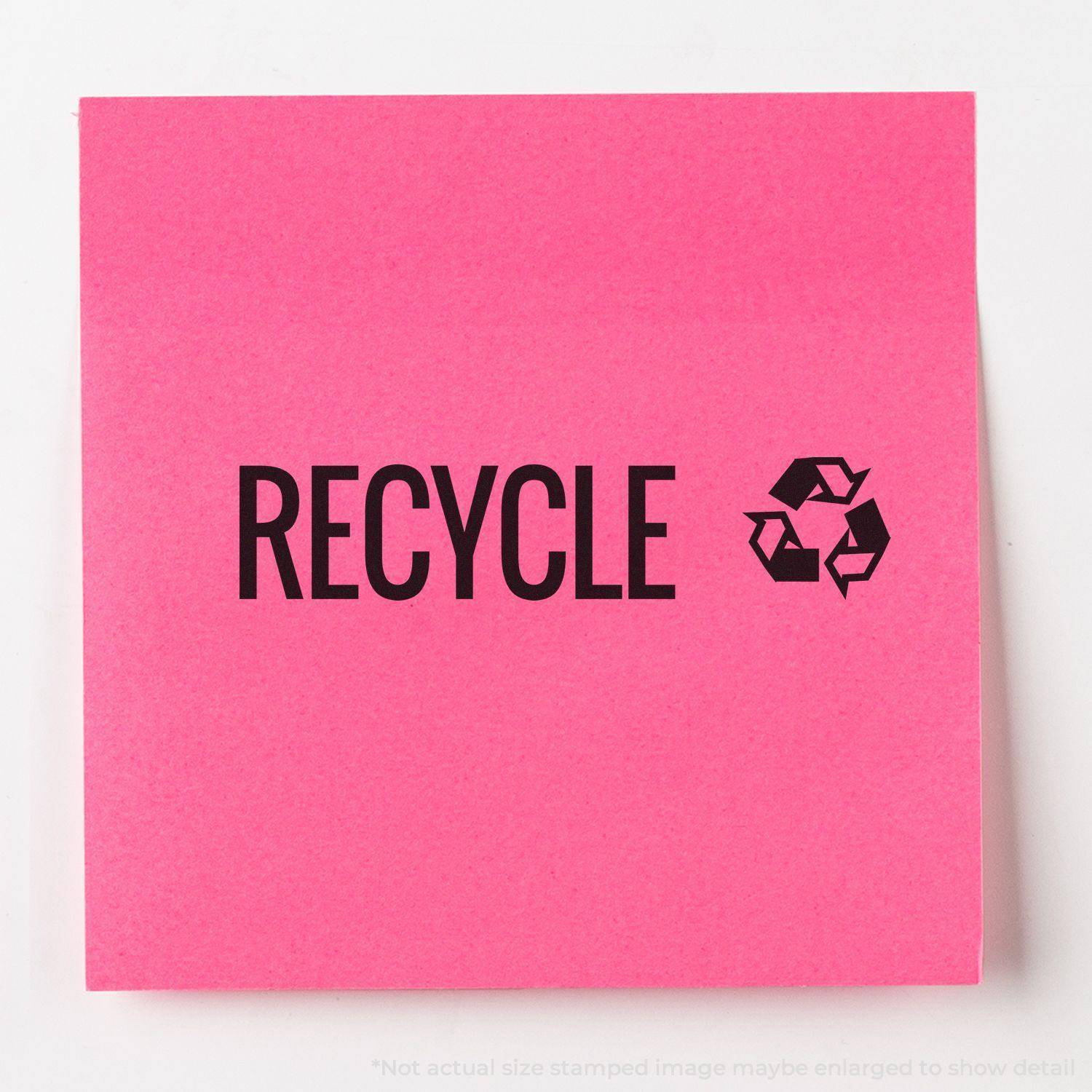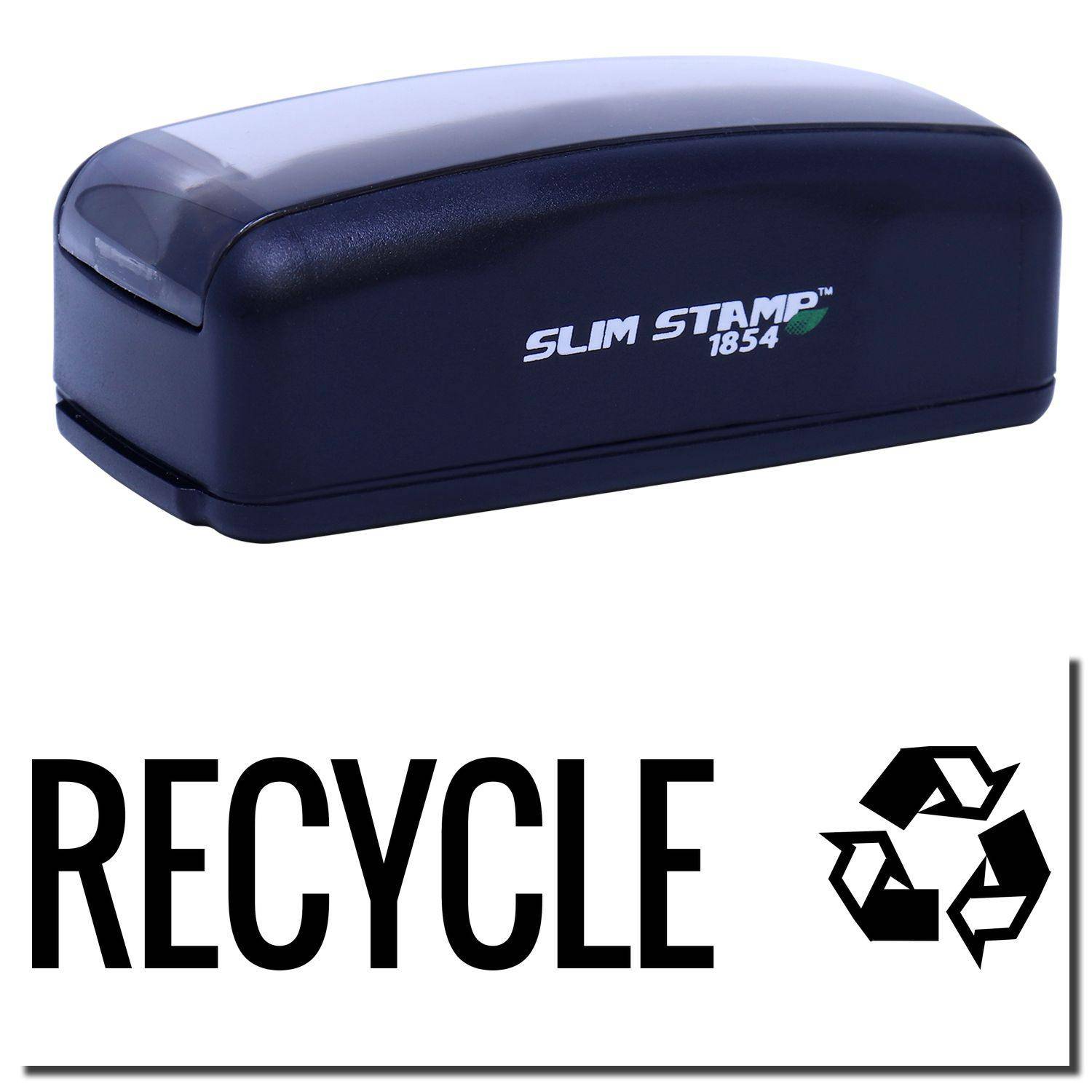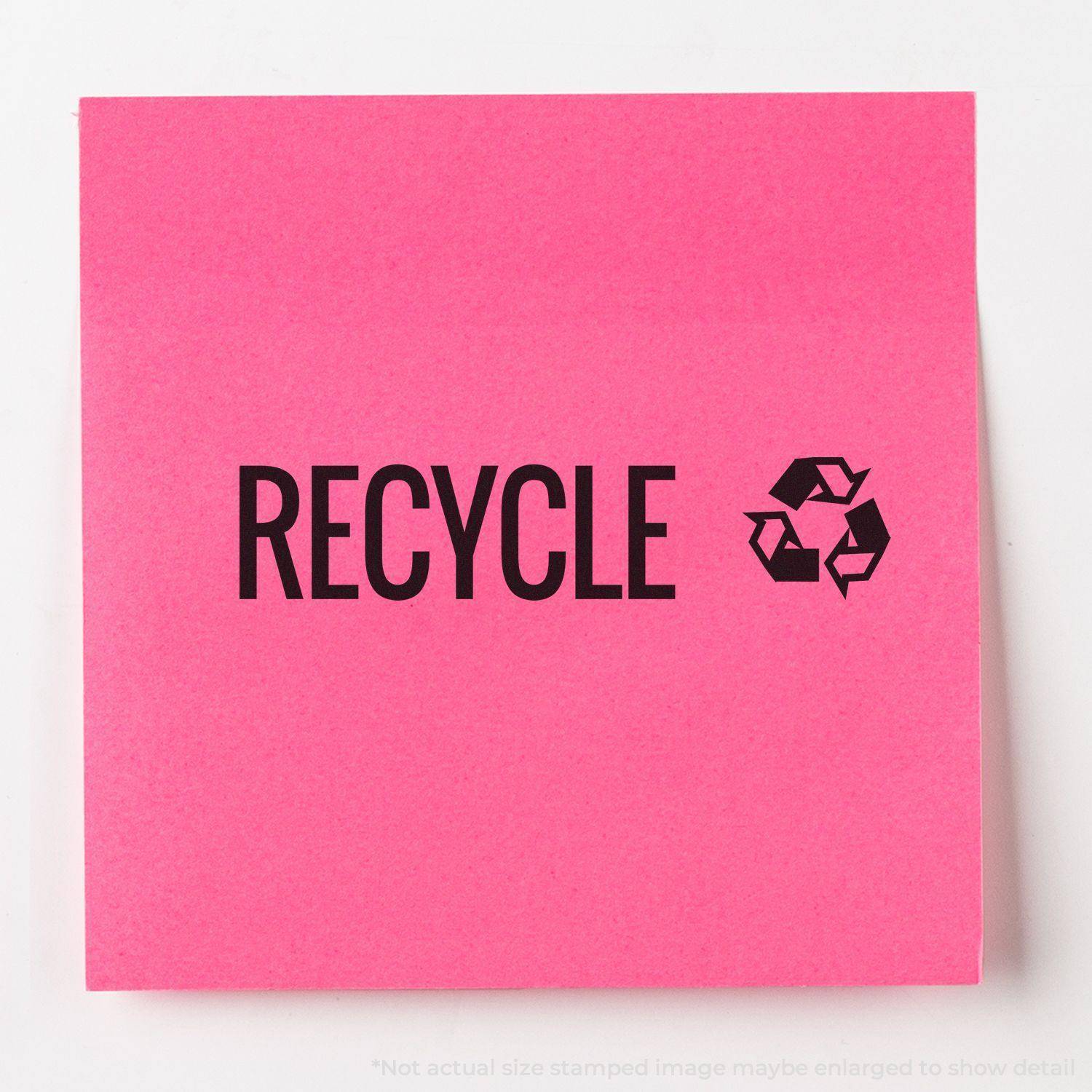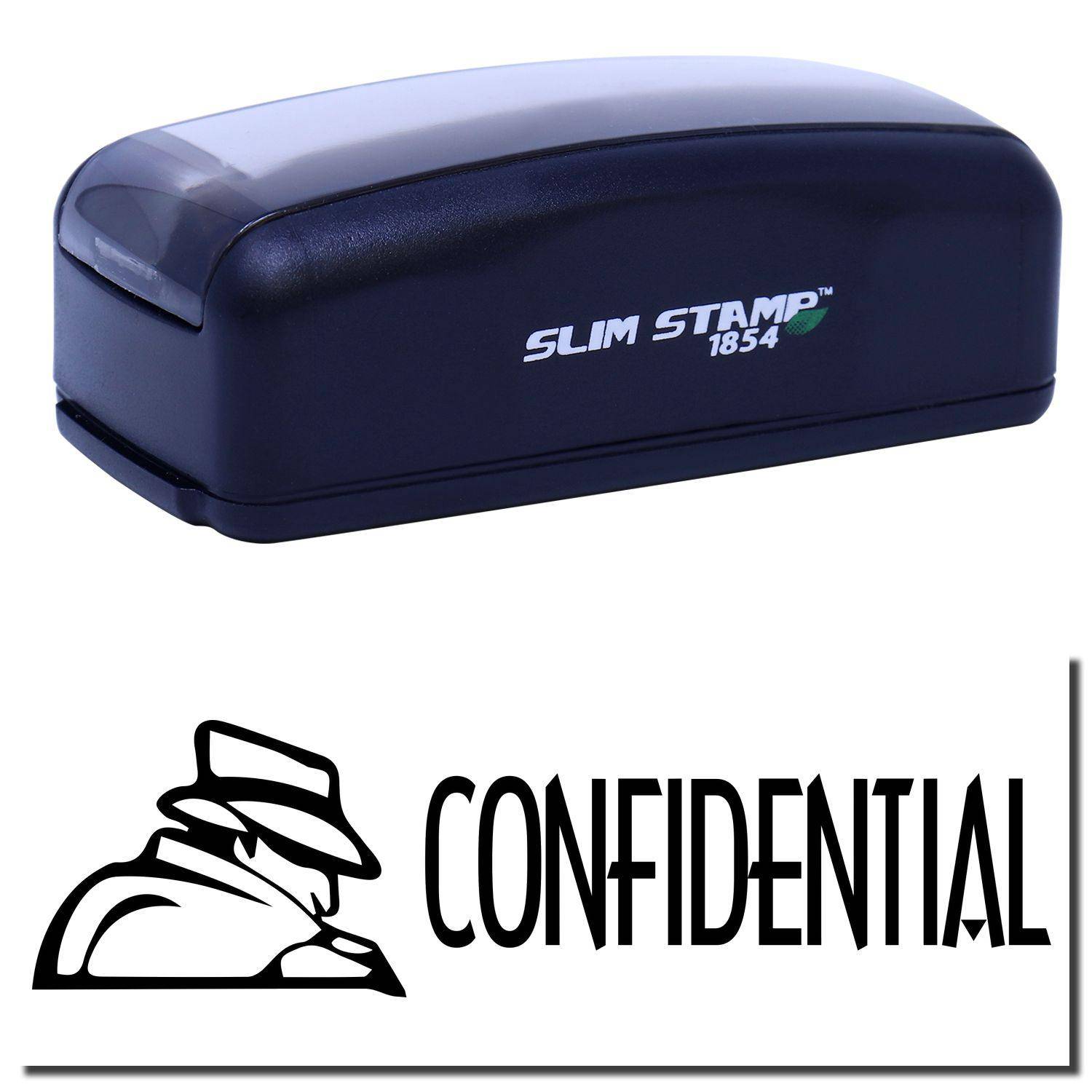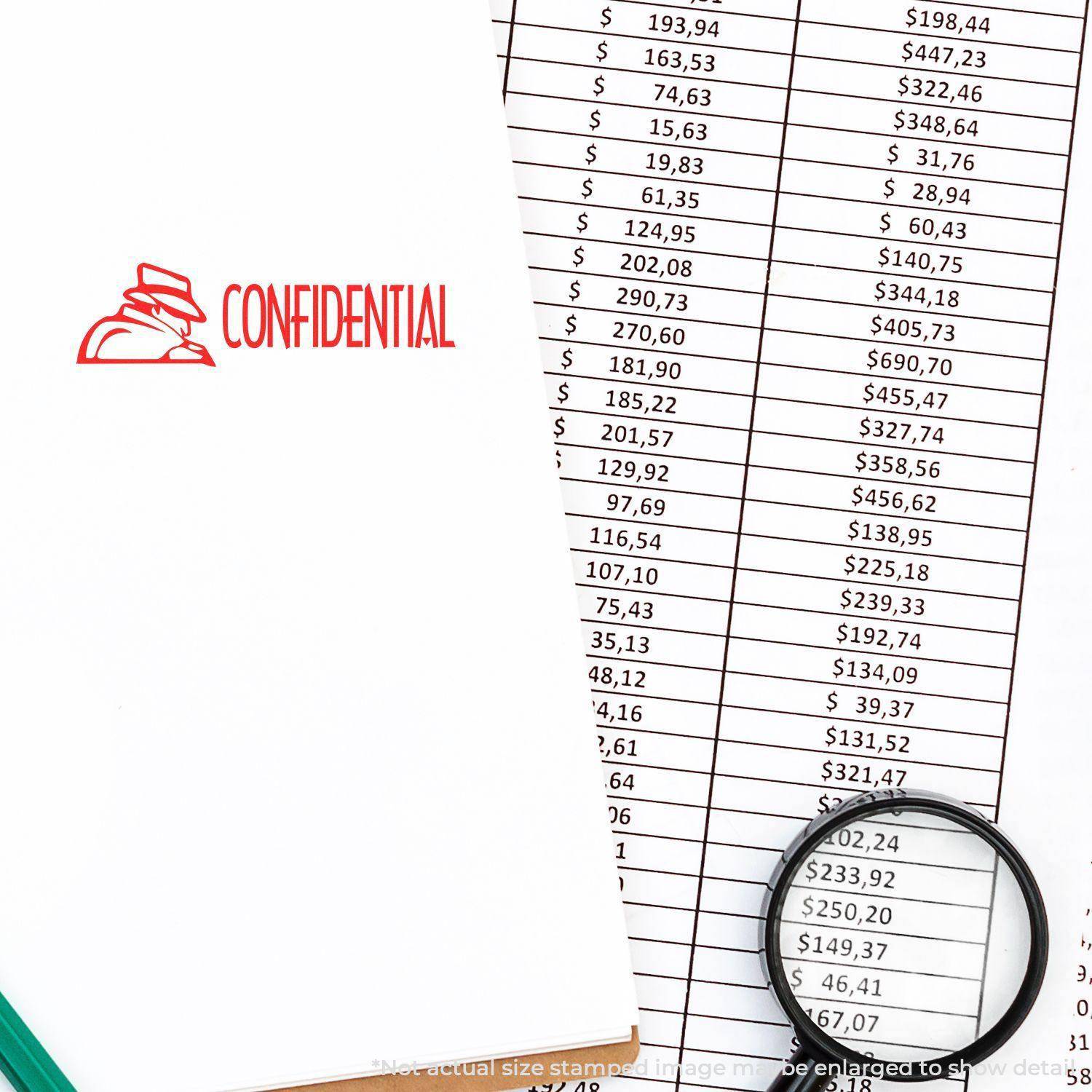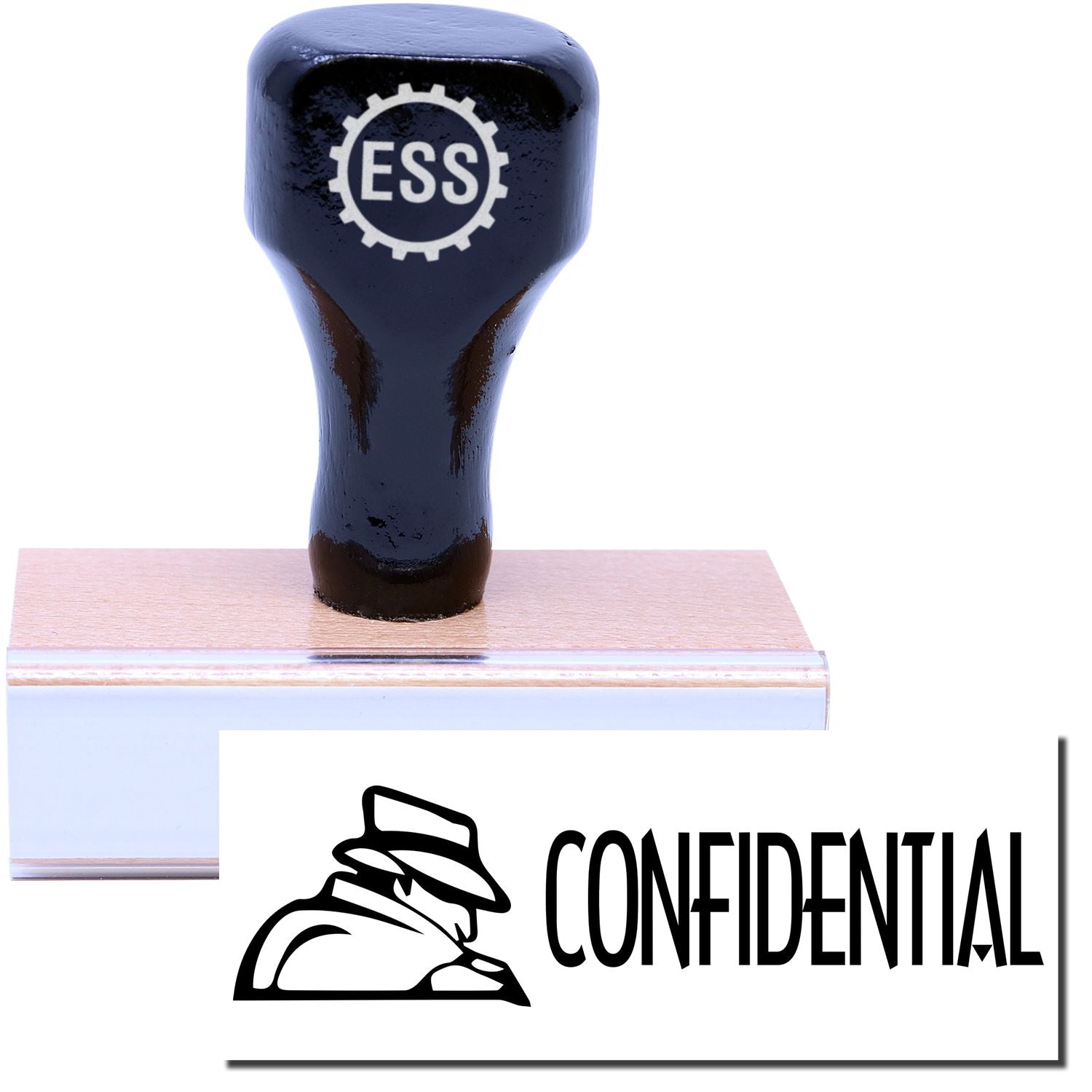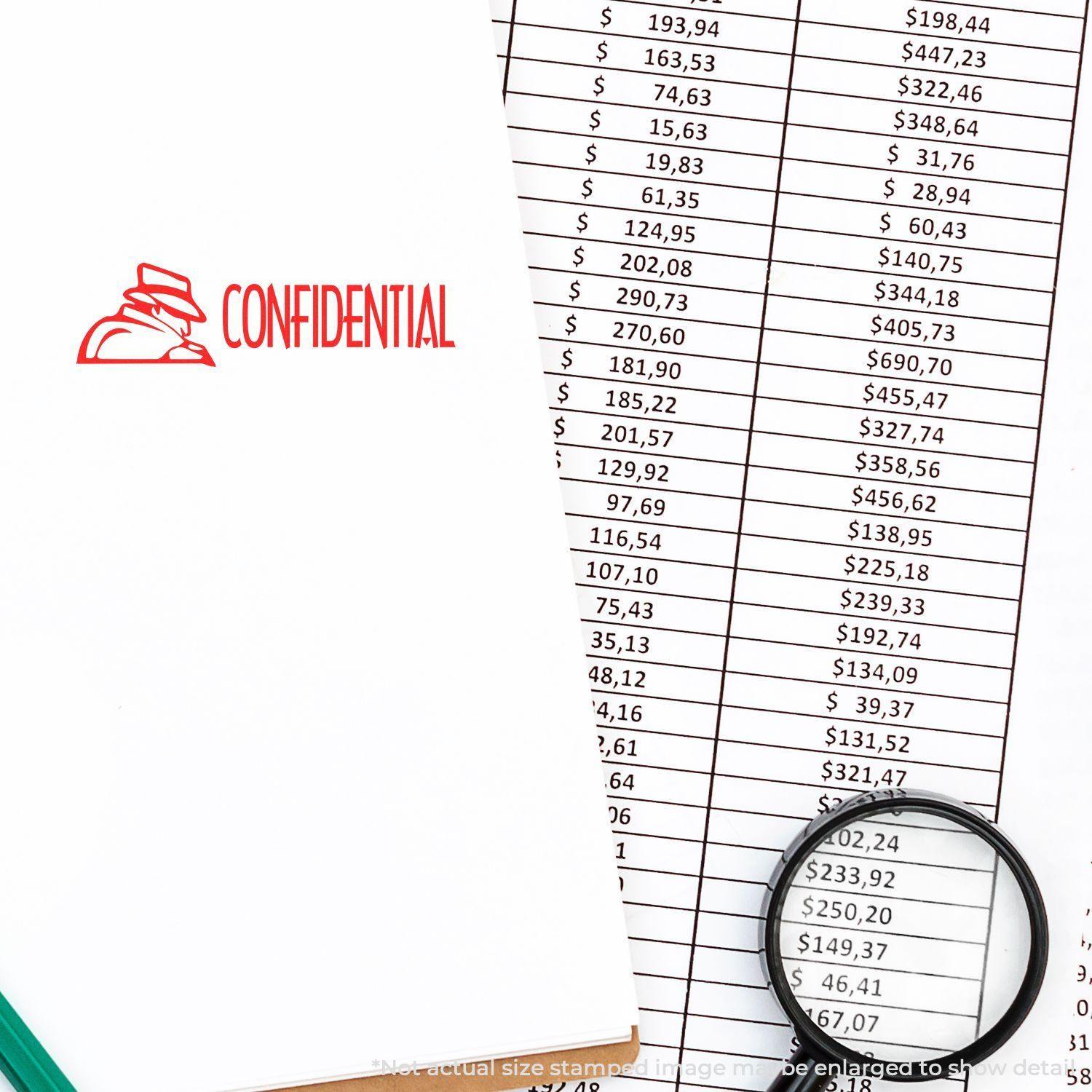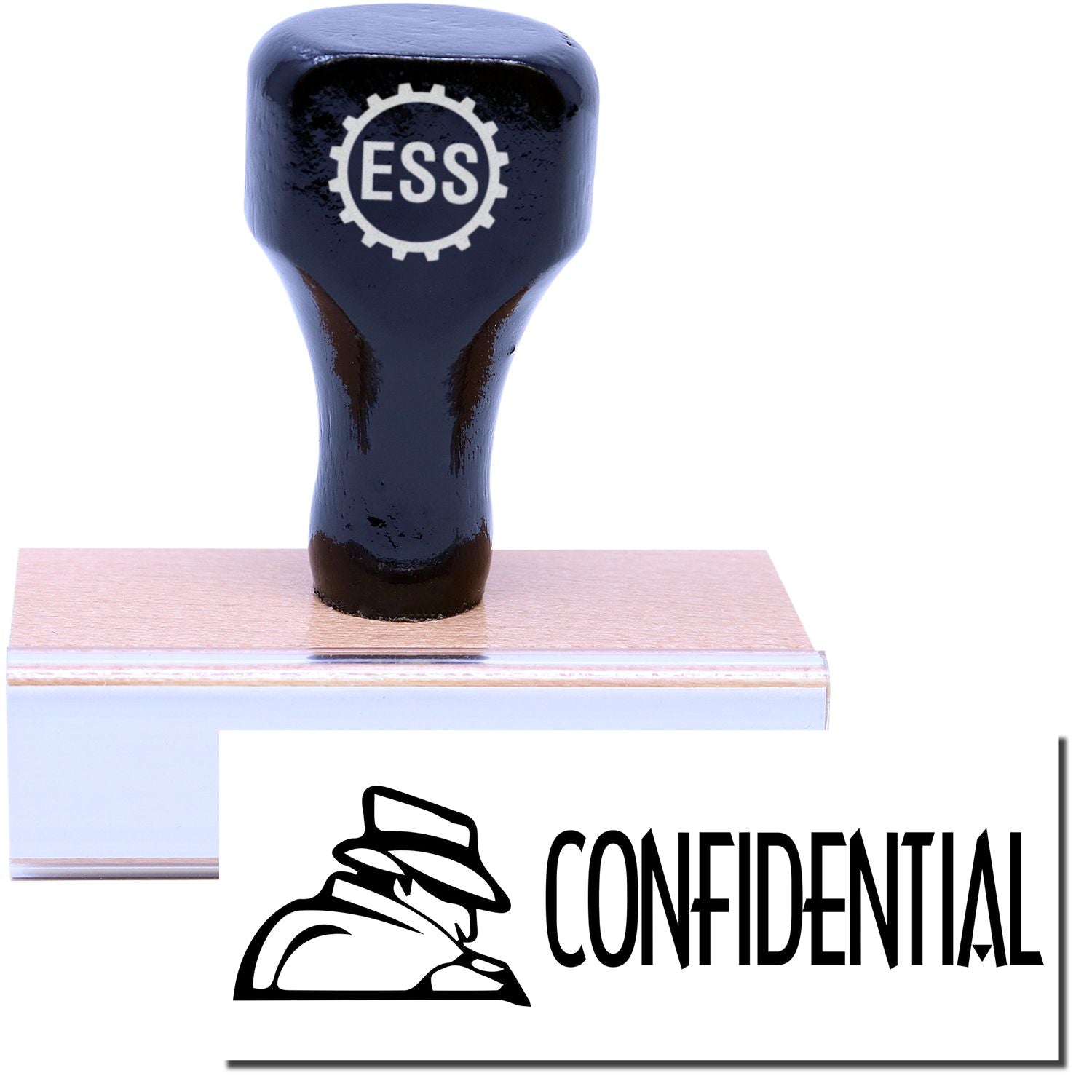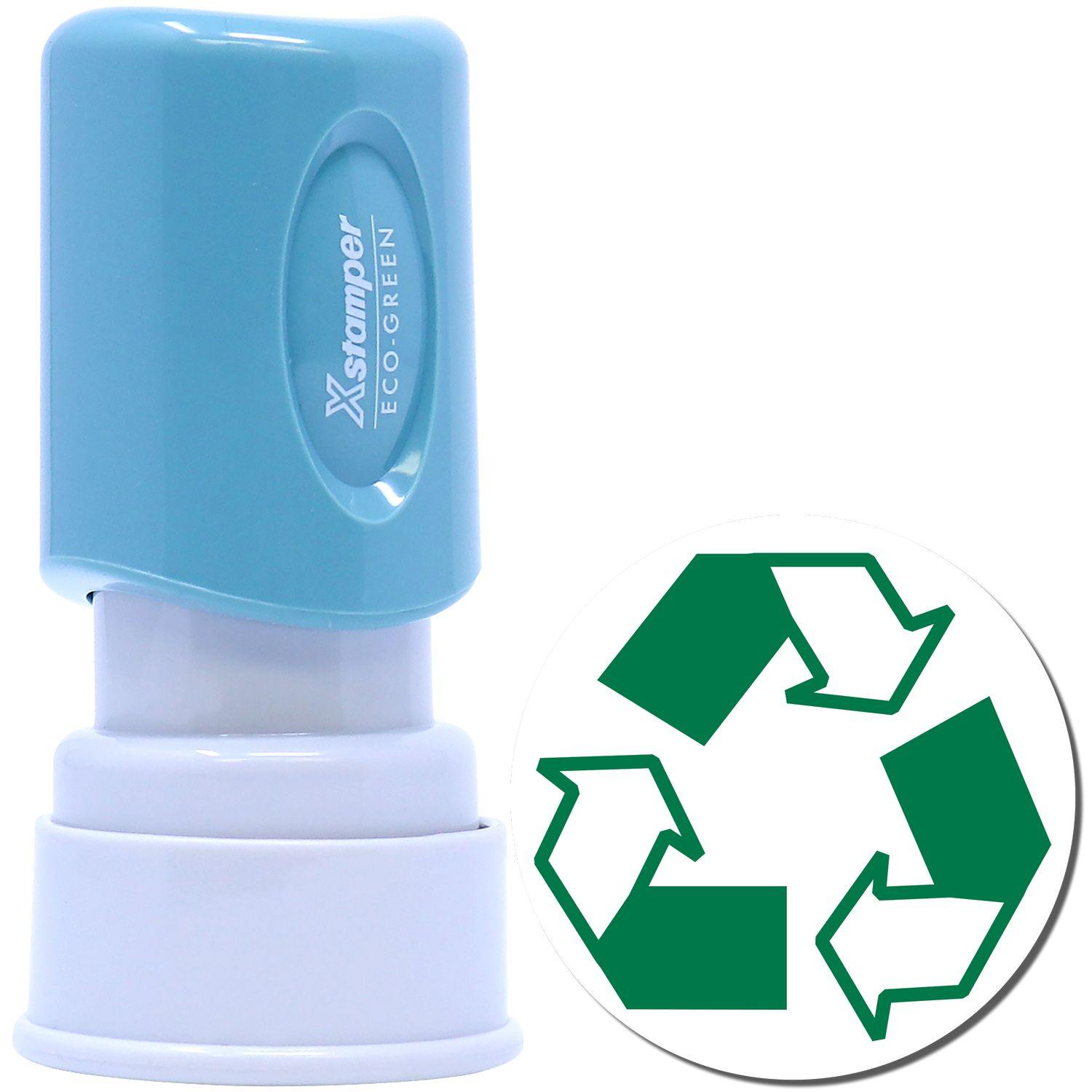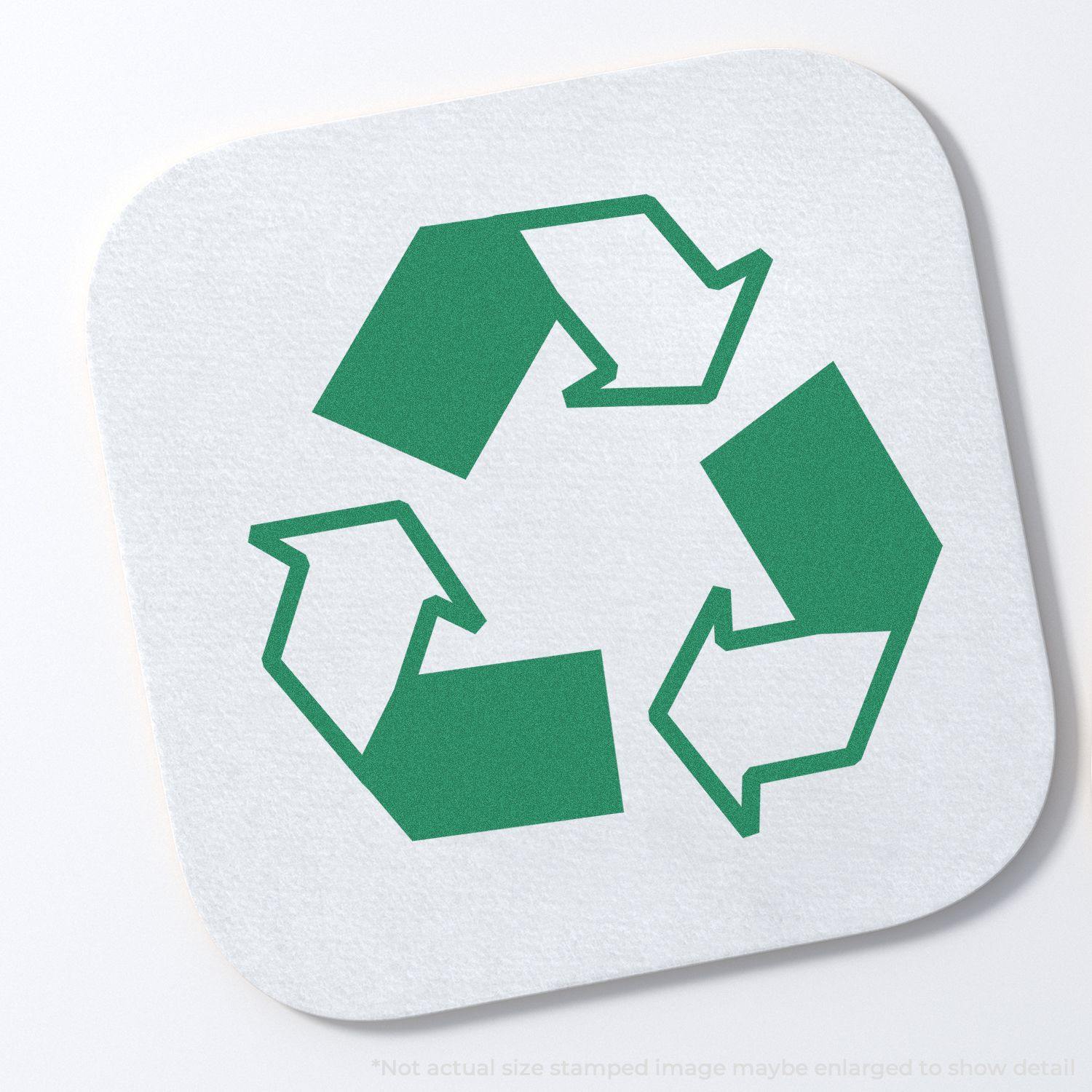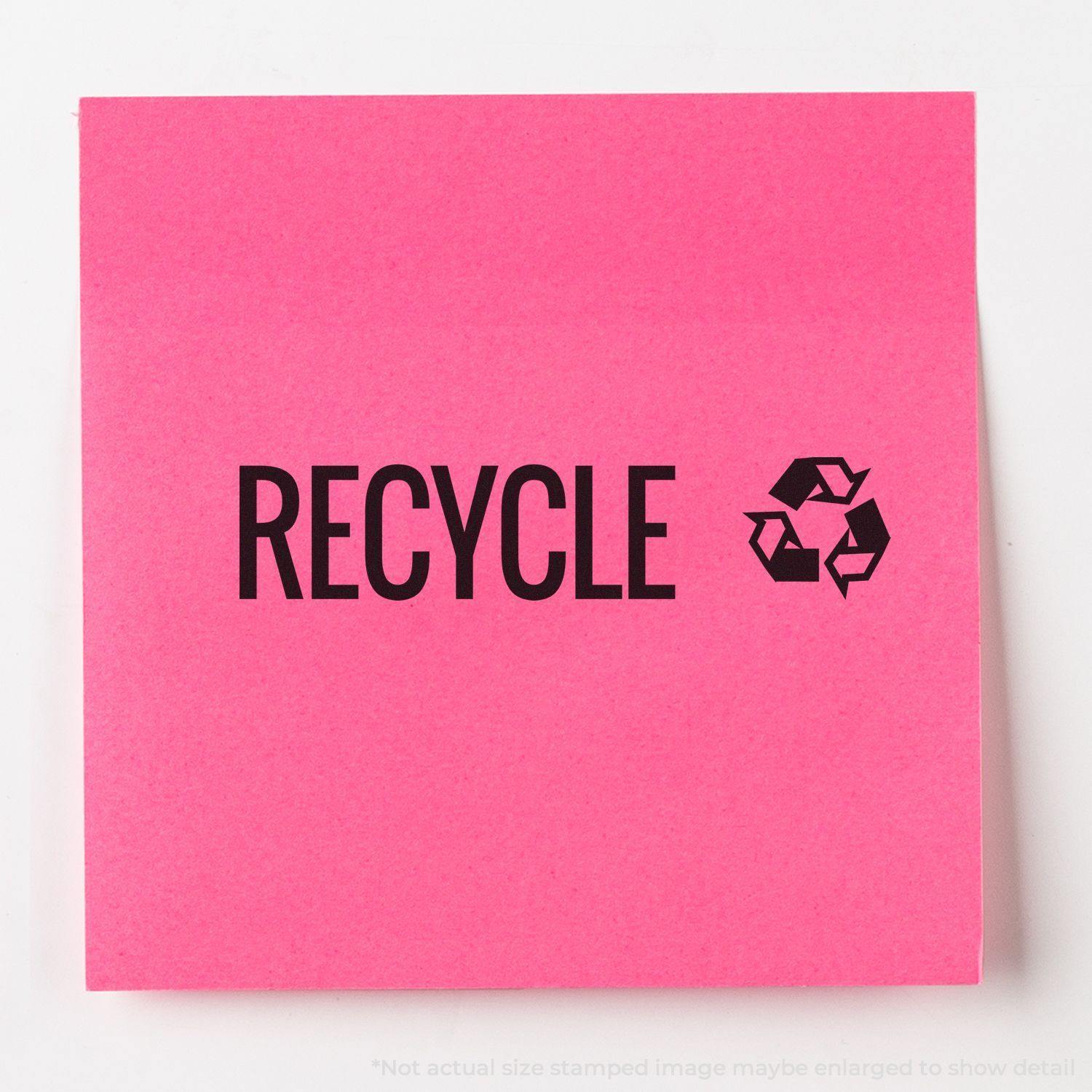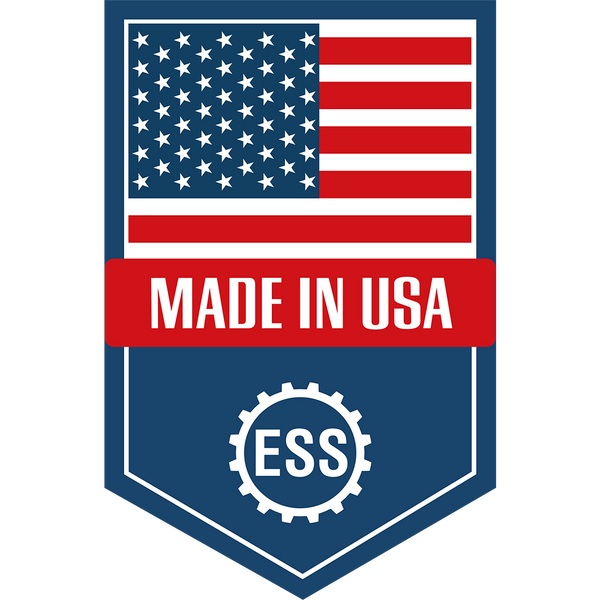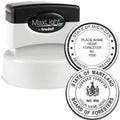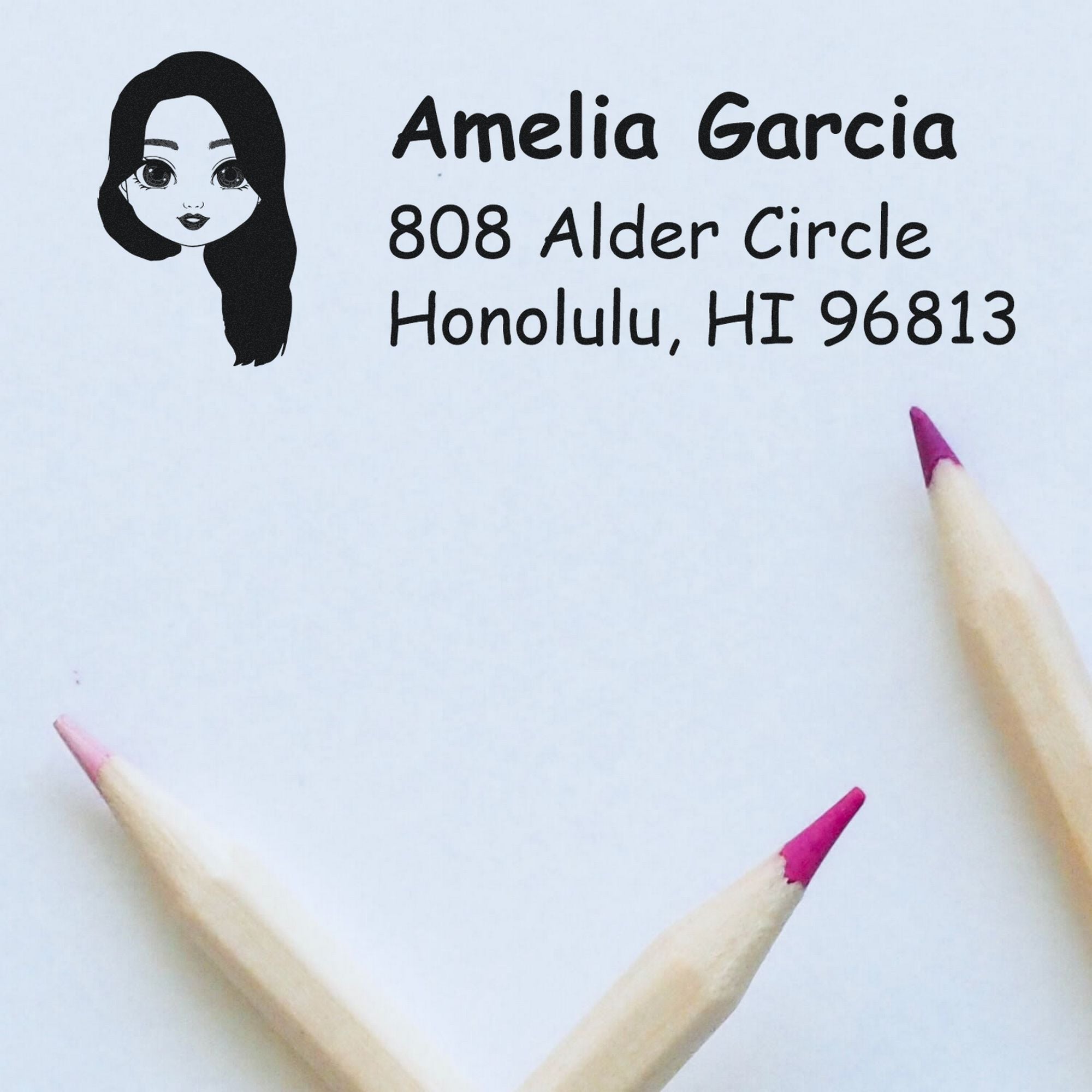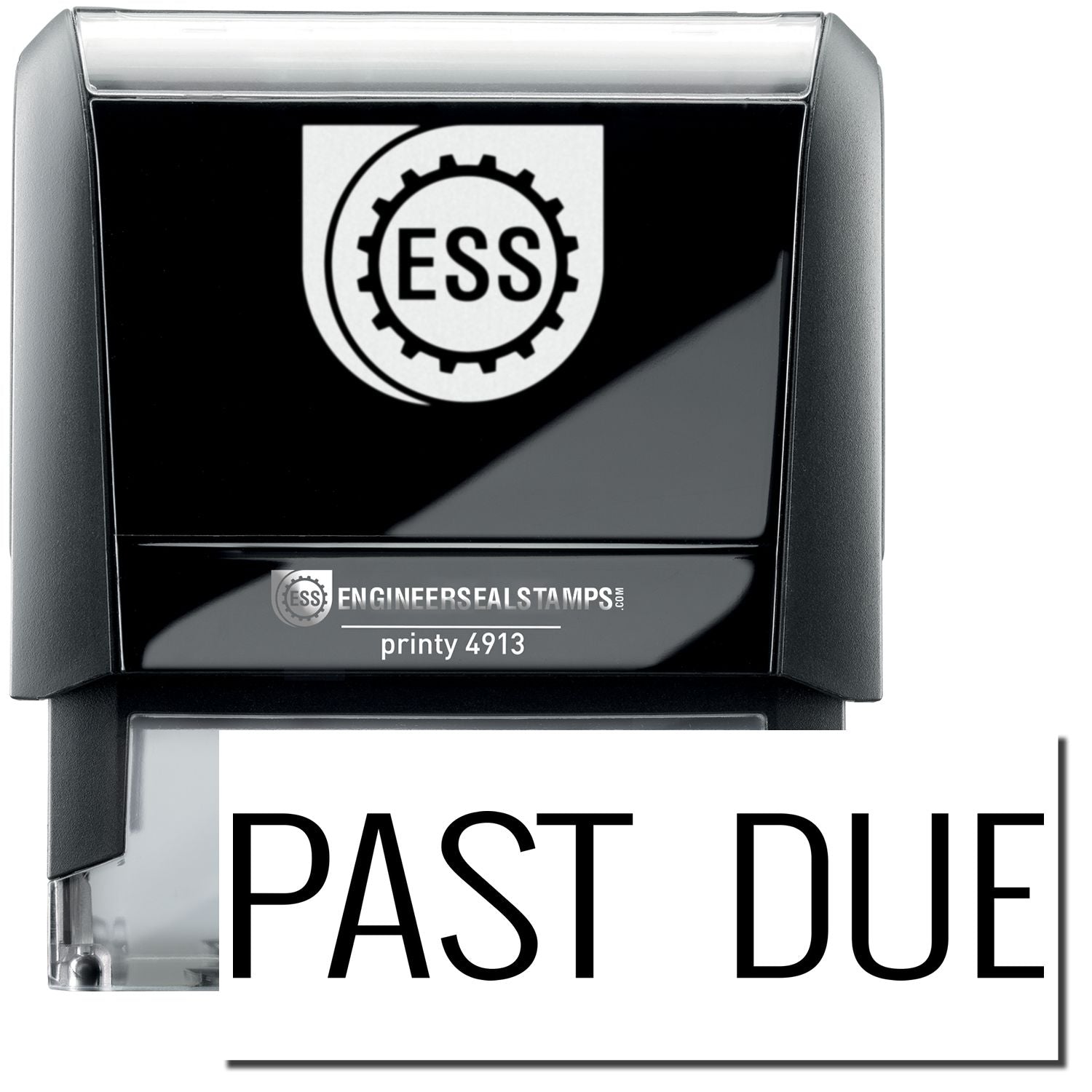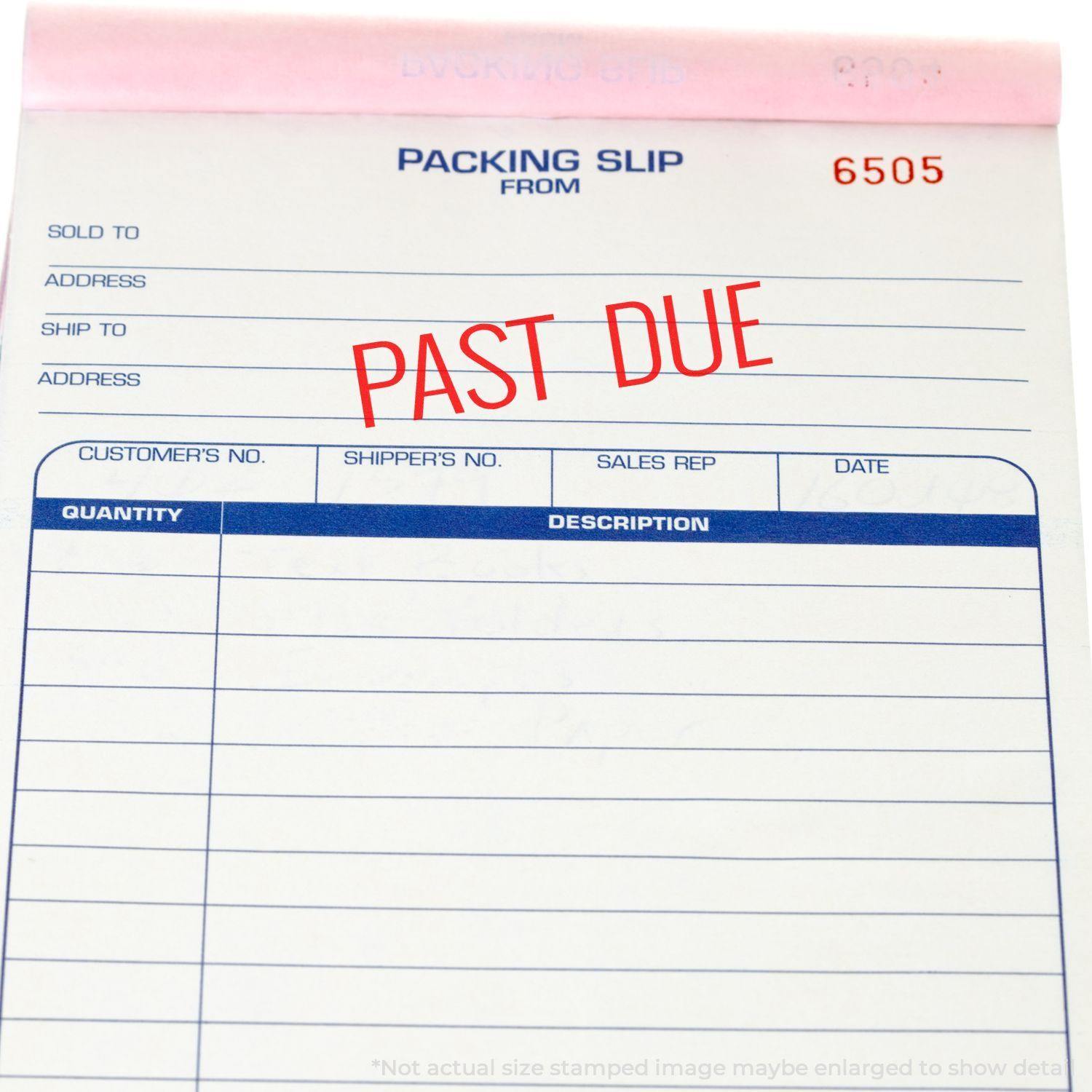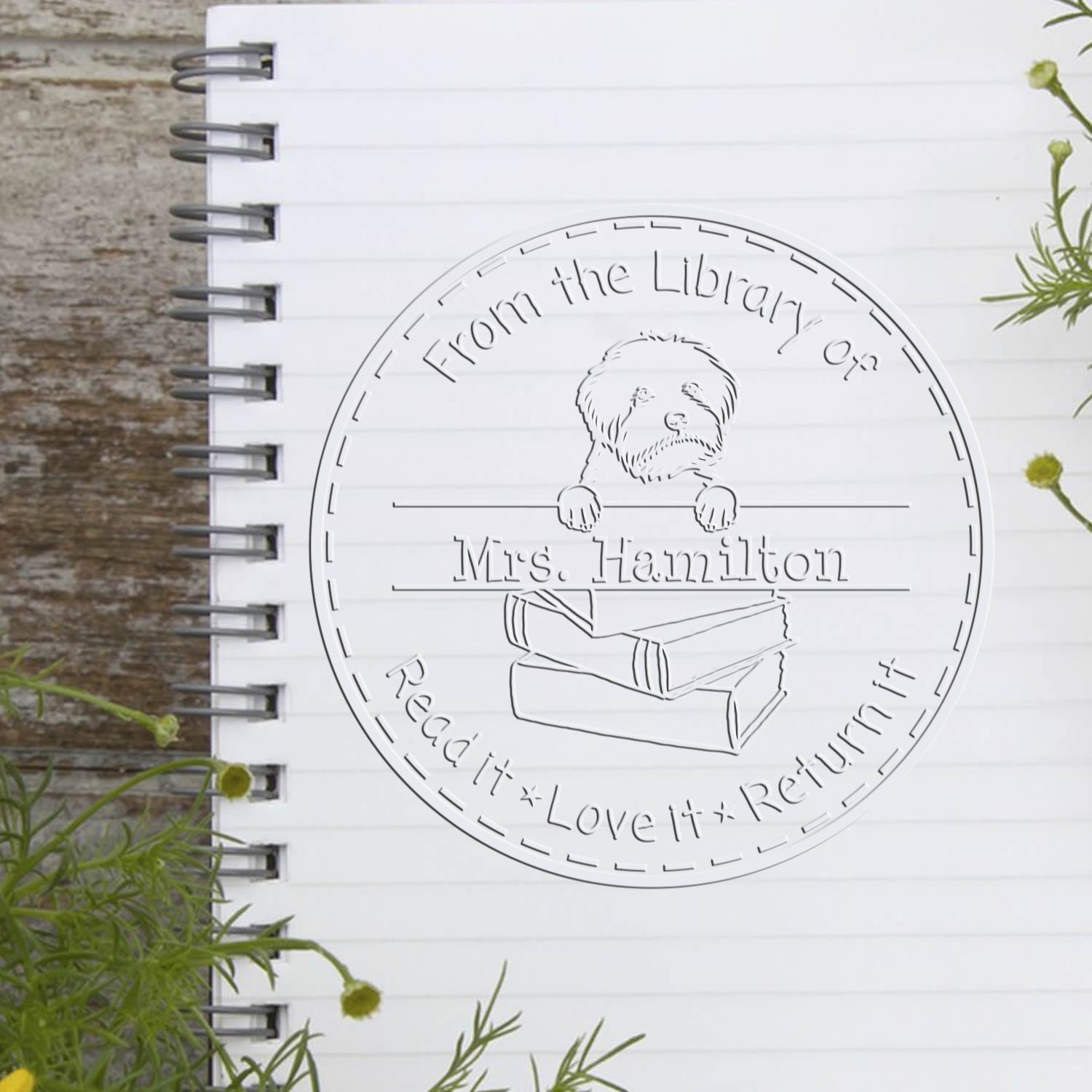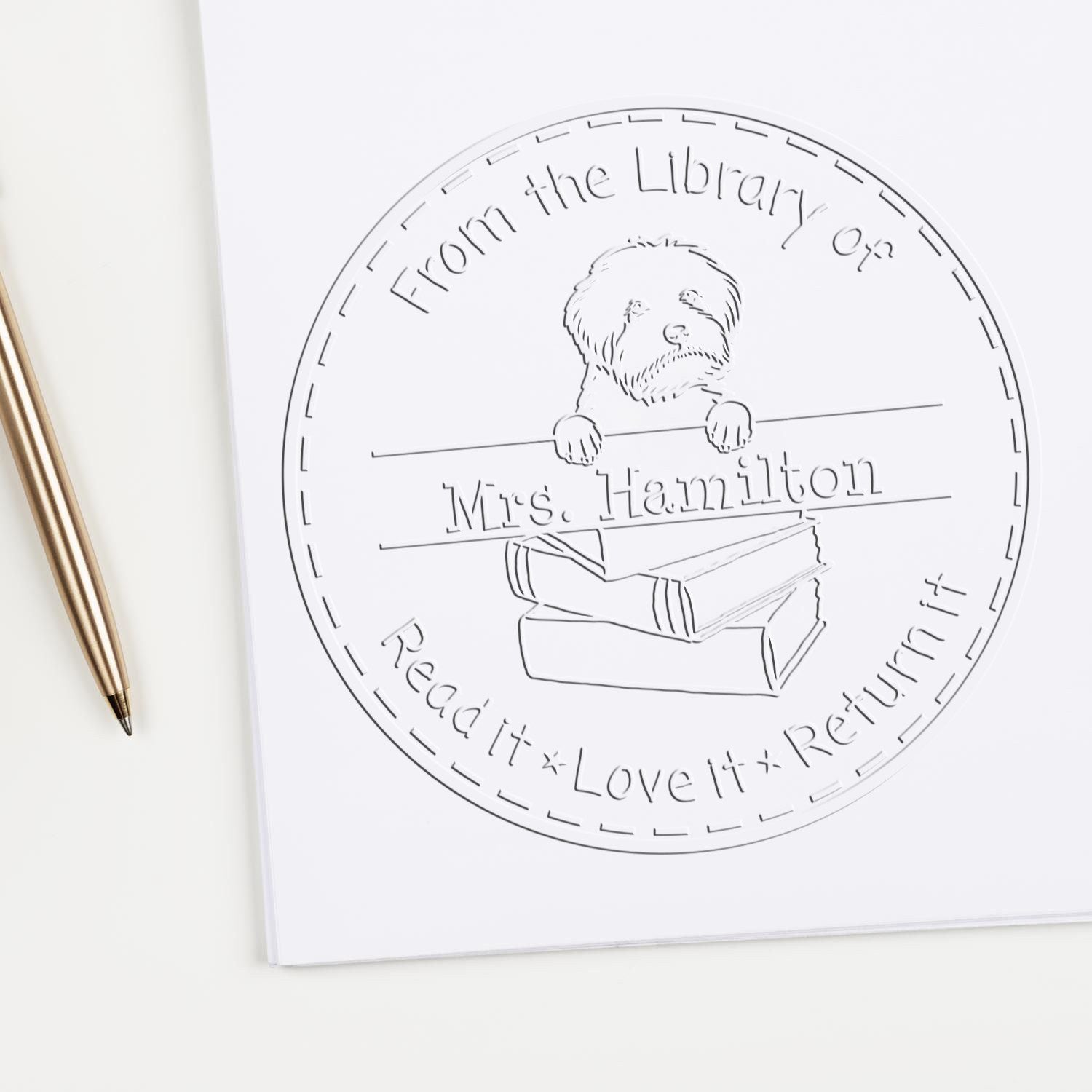Discover the power of stamping
Picture this: you’re sorting through a stack of documents and spot one that boasts a crisp imprint of a company’s logo right in the corner. It’s subtle, but it instantly feels official and a cut above everything else in the pile. That’s the effect a logo stamp for company documents can have on your business materials. It’s not just about looking professional, it’s about extending your brand identity wherever it appears.
A simple stamp with your logo can give invoices, contracts, receipts, and other crucial paperwork a polished finish, without the fuss of printing or fancy embellishments. If you’re tight on budget or time, stamping streamlines how you brand every document that comes off your desk. It also offers a personal touch that can connect with your clients, especially if you’re running a small business where relationships matter a lot.
Of course, a stamp is more than a rubber block and ink pad. The design, size, and even how you use that stamp all play a part in reinforcing your message. Instead of forming just another piece of office equipment gathering dust, the right stamp can prove to be one of your most versatile branding tools. You can personalize letterheads, receipts, packaging, or even small notes for clients. It slips easily into your daily routine, adding flair without any major hassle or cost.
What a custom stamp can do for you
- It elevates your brand presence. When your papers or packaging carry a consistent logo, you reinforce the memory of your brand in your customers’ minds.
- It adds a personal, handcrafted feel. A stamped image can convey friendliness, care, and authenticity that sometimes gets lost in high-volume digital printing.
- It saves time in mass paperwork tasks. Instead of printing each document with a specialized header or watermark, you simply stamp and go.
- It helps you stand out in a crowded inbox or mailbox. Stamping your envelope or letterhead can prompt someone to open your correspondence first.
You might think: “Doesn’t everyone use digital files these days?” Sure, electronic documents are big. Still, there are countless moments when you hand over a physical paper, package, or note. Stamping ensures every one of those moments is on-brand.
Understand how logo stamps are made
Stamps come in different shapes, sizes, and materials. If you’ve never researched their production process, you might be surprised by how many options exist. From classic rubber stamps to modern polymer versions, each type has specific advantages. Knowing how they’re made helps you pick the right one for your small business needs.
Common stamp materials
- Rubber: Traditional rubber stamps work well for clear, bold designs, especially if your logo has solid lines and minimal fine detail. Rubber is durable and can last for years with regular care.
- Polymer: This synthetic material can capture finer details and sharper lines. While it may not be as rugged as rubber, polymer stamps often come self-inking (the ink is stored inside the stamp). That means they’re extra convenient if you have loads of documents to manage.
- Pre-inked gel: These high-resolution stamps are fantastic if your logo has gradients or intricate shading. Pre-inked models can create very crisp impressions, though they may require care in refilling the ink to keep them performing well.
The design and transfer process
Stamp creation generally follows a simple pattern. First, you provide a high-resolution logo (preferably in black-and-white or a vector format) to the stamp maker. Then, the maker uses a specialized machine or a laser engraver to etch or burn your logo into rubber or polymer plates. These plates are either mounted onto wooden handles or inserted into self-inking or pre-inked housings.
With the rise of accessible technology, custom stamp services like Engineer Stamps (ESS) sometimes offer an easy online interface to upload your design and preview the final look before it’s produced. The end-to-end turnaround can be surprisingly quick, ensuring you get your stamp in hand well before your next big batch of documents needs to go out.
Pick the perfect design
Selecting the right style and layout for your logo is crucial when you’re about to invest in a custom stamp. Sure, not every design will look great stamped on paper, and it’s worth thinking about how your ink impressions will actually appear in real life. A stamp is basically a simplified version of high-resolution artwork, so planning ahead will help you avoid a cluttered or fuzzy look.
Align your brand identity
Your custom logo stamp should match the style and essence of your brand. If your small business identity leans toward modern minimalism, opt for a simpler outline of your logo that relies on negative space. If your brand is more playful, consider a whimsical script or vibrant shapes. Just make sure the elements translate well in a single-colored imprint.
Even if your brand typically uses multi-colored designs, a one-color stamp can still reflect your personality. Think of it as a stripped-down, iconic version of your typical logo. Choose an ink color that supports what you want to express. Black is classic and professional, while navy, deep green, or warm brown can offer a distinctive flair.
Balance clarity and detail
When you stamp a logo, a complex design can get muddy fast, especially in smaller sizes. Fine lines or tiny surfaces might not show up clearly on certain papers or might bleed slightly. Consider scaling down super-fine details or simplifying intricate graphics. That way, you get consistent results on everything from thick cardstock to standard printer paper.
A good rule of thumb is to zoom out and assess your logo from afar. If the smallest elements are barely recognizable, see if you can remove or reshape them. Crisp lines and clear shapes typically produce the best impressions.
Test your final proof
Before you order a large run of stamps or finalize that polished self-inking model, ask for a test proof if it’s available. Services like ESS can often supply samples or digital previews to ensure you’re thrilled with the results. If you get a physical sample, try stamping on various materials: envelopes, receipts, textured business card stock, or even packaging tapes. Pay attention to how the image transfers. Notice any smudging or partial prints? Check if the details remain sharp.
Taking your time at this stage allows you to fix any design quirks that only become obvious once the stamp is in action. It’s better to catch them before you finalize your order.
Use your stamp effectively
Designing and owning a custom logo stamp is only half the story. The other half is how you put it to work in your daily flow. Think of your stamp as a brand ambassador that can appear in unexpected places, reminding your clients and customers of your business’s distinct character. It quickly turns everyday items into small marketing pieces, reflecting your brand’s approach and vibe.
Office documents
- Contracts and invoices: A quick stamp can transform a plain piece of paper into an official, recognizable document.
- Presentation handouts: If you regularly meet clients in person, stamping the top-right corner of a presentation header can emphasize a personal, yet professional, approach.
- Mailers: For any direct mail campaigns, stamping the envelope outside or first page inside can catch the recipient’s eye before they even read a word.
Customer-facing materials
- Receipts: After a sale, a bright logo on the receipt can make the transaction feel more official and curated.
- Thank-you notes: Handwritten notes can really stand out in a digital age. Imagine pairing your personal message with a neat stamp at the bottom.
- Gift certificates: If you offer gift cards, a custom stamp can unify the look of your branding and give recipients a consistent impression of professionalism.
Creative marketing
- Packaging and labels: From coffee bags to soap wrappers, adding your logo ensures your product is recognizably yours.
- Event promotions: Hosting a booth at a local fair or tradeshow? Stamp mini-flyers or promotional items to hand out.
- Social media crossovers: Snap a picture or short video of your stamping process and share it on your business’s channels. This behind-the-scenes glimpse can spark conversations and let clients feel closer to your brand.
A well-placed stamp strikes a balance between being memorable and tasteful. Used too often or in awkward spots, it can feel forced. But when thoughtfully placed, it sends a signal: “We care about our brand and want you to remember it.”
Maintain and store your stamp
Re-inking a favorite stamp or storing it properly might not be the flashiest part of business branding, but good maintenance can save you time and money. No one wants a blotchy or half-visible logo messing up crucial paperwork. With a few simple habits, you’ll preserve clarity and keep your stamp in prime condition.
Simple care tips
- Clean it gently. After heavy use, wipe off excess ink with a lint-free cloth. Don’t rub too hard or you might degrade the etched surface.
- Use the right ink. If your stamp isn’t pre-inked, pick an ink compatible with your stamp type (rubber or polymer) and the material you’re stamping. Some inks can dry out or gum up certain stamps if they’re not designed for each other.
- Test your impression on scratch paper. Before stamping an official document, do a quick test to ensure the image is crisp.
Storage best practices
- Keep stamps out of direct sunlight. Too much heat or UV exposure can warp the rubber or fade the polymer.
- Cover or cap your self-inking stamps. That prevents dust buildup in the internal ink pad.
- Stand upright if possible. With self-inking models, resting them upside down might cause ink to pool. For wooden-handled stamps, store them with the rubber side down on a clean surface.
Over time, any stamp will show signs of wear. The key is catching them early. If lines start to appear faint or the edges get fuzzy, either re-ink or replace the pad. Proper upkeep ensures your brand impression remains tip-top, no matter how many pages you mark.
Explore real-life stamping ideas
Let’s be honest, a great stamp can be used in more ways than you initially imagine. Whether you want to elevate your marketing efforts or add personal charm to your packaging, there’s always a fresh opportunity to make your brand shine. Here are some creative avenues to explore.
- Certificates and awards. If you run workshops or training sessions, stamping a small official seal in the corner of a certificate adds credibility.
- Promotional coasters or flyers. If you’re on a budget, you can buy plain coasters or lightweight paper sheets and turn them into promotional items with a single stamp.
- Trade show freebies. Mugs or tote bags can be tricky to stamp, but you can stamp tags attached to them, reinforcing your brand’s presence at those big networking events.
- Personal notes for loyal customers. A heartfelt thank-you letter feels even more memorable with a crisp brand impression near your sign-off.
You can explore these possibilities while still keeping an eye on consistency. If you’re using multiple stamps or ink colors, pick a cohesive style so customers recognize your brand every time. Stamping is all about that perfect balance: visually striking, yet seamless enough to blend into your daily operations.
Find answers to key questions
Below, you’ll find six of the most common concerns that pop up when you’re choosing, using, or maintaining a custom logo stamp. From figuring out the best surfaces to selecting the perfect ink, hopefully these answers clear up any lingering doubts.
Can I use my stamp on glossy paper?
You can, but it depends on your ink choice. Glossy or coated paper doesn’t absorb liquid ink as readily as standard paper, so you may need a fast-drying, specially formulated ink to avoid smudges. Testing on a sample sheet is always a good idea. If your business often uses shiny brochures or high-quality photo paper, ask your stamp maker (like Engineer Stamps) to recommend an ink brand suited for coated surfaces.
Does color matter for my stamp?
It can, especially if you want to stand out. Traditional black ink is classic and reliable, but there’s no rule saying you must stick to it. Navy, dark green, or even vibrant red ink can give your logo a unique twist—just make sure it aligns with your brand’s identity. If your original logo has multiple colors, consider picking the single hue that’s most representative or that preserves the key features of your design.
How long does a stamp last?
A well-made stamp can last for thousands of impressions, sometimes even tens of thousands, before showing any signs of wear. The exact lifespan depends on factors like the material, frequency of use, and overall care. Rubber stamps tend to be extremely durable, while polymer ones last a long time under normal usage. Keep the surface clean and re-ink properly to prolong your stamp’s life.
Can I stamp on product packaging?
Absolutely. From paper bags to cardboard boxes, a crisp logo stamp is a great way to brand your packaging without paying for full-blown professional printing. If you’re stamping on porous or textured surfaces, consider using specific packaging inks that provide better adhesion and clarity. Some businesses also use stamps on tissue paper or wrapping paper, creating a personal, craft-like impression.
What if my logo has fine lines?
Fine lines need careful consideration. If your current design is extremely detailed, you may want to simplify those lines or make them slightly thicker. Most stamp makers, including ESS, can advise on the best modifications. Laser engraving can capture good detail, but keep in mind that super-thin lines may still come across faded or patchy when stamped. Checking a proof or requesting a sample is your safest bet.
How do I re-ink my stamp?
For self-inking or pre-inked stamps, you usually open a small compartment in the stamp body and add a few drops of ink designated for that stamp type. Avoid overfilling, since too much ink can lead to blotchy prints. If you have a manual rubber stamp, just pick a suitable ink pad. Replace the pad when impressions start looking faint and ensure you store the pad in an airtight container or cover as recommended.
When used thoughtfully, a logo stamp can be that subtle signature on every document, piece of packaging, or marketing material you share. It’s a budget-friendly, efficient way to reinforce your brand’s identity. Plus, it offers a tactile, human element that purely digital efforts can lack. By focusing on design clarity, picking the right materials, and maintaining your stamp, you’ll send a consistent message whenever you make your mark.
So go ahead—unbox your creativity. Think about all the places your logo might appear and how a stamp could showcase it. Whether you’re prepping for a product launch, sending out contracts, or simply looking to add charm to your everyday stationery, a custom logo stamp could be the humble hero your small business needs. With services like Engineer Stamps at your disposal, you have everything you need to transform a regular piece of paper into a memorable brand moment. And with every press of that stamp, you remind the world who you are, what you do, and why you do it best.


